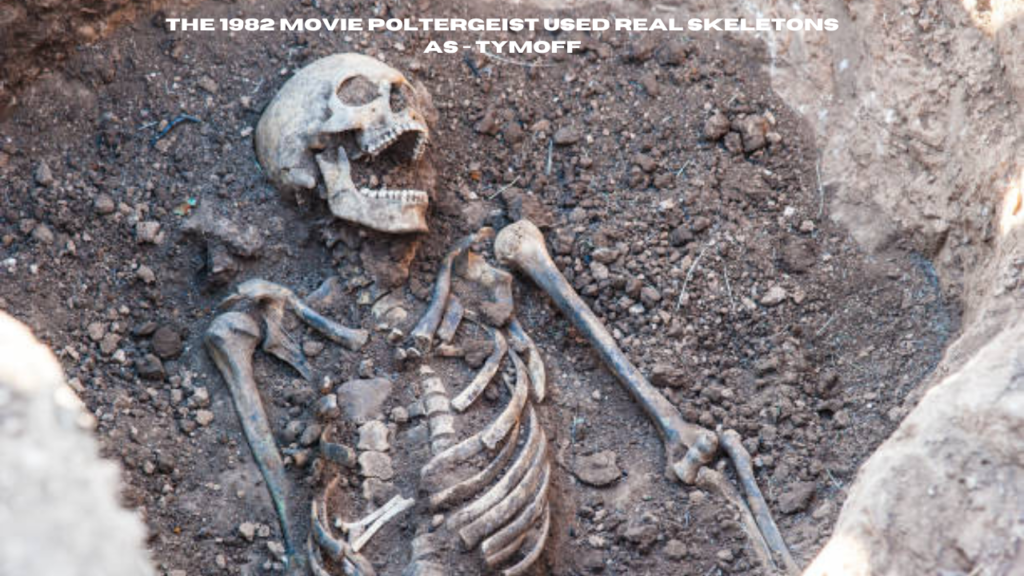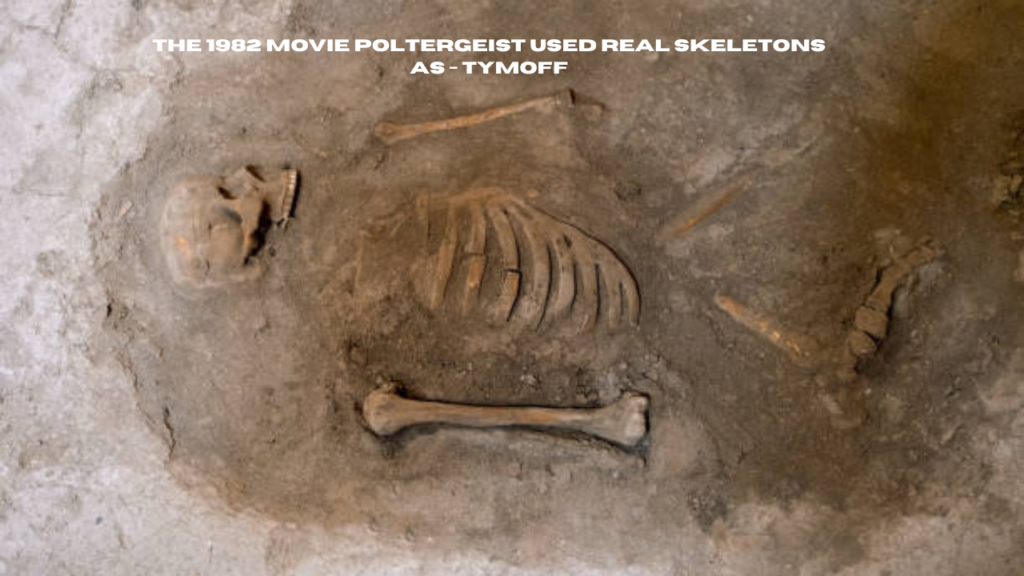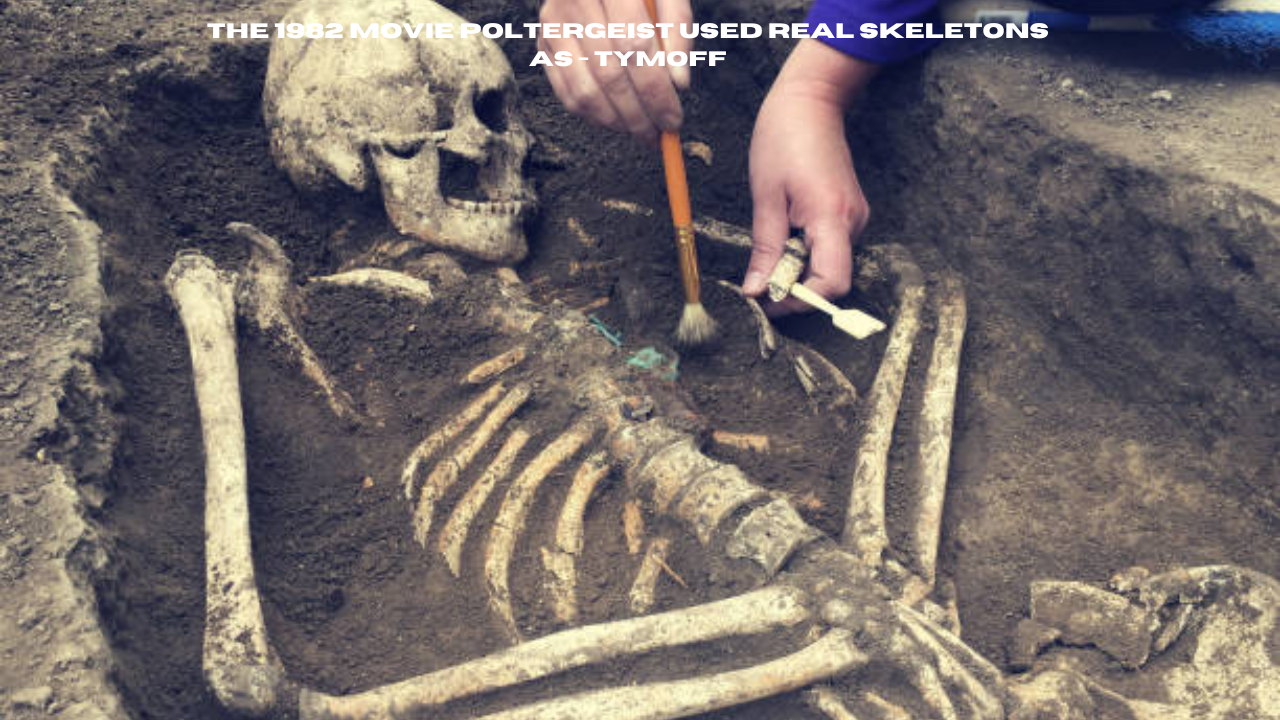The 1982 movie Poltergeist is often hailed as one of the most chilling supernatural horror films of its time. Directed by Tobe Hooper and co-written by Steven Spielberg, this classic tale of a suburban family tormented by malevolent spirits has left an indelible mark on the genre. Among its many haunting elements, there is one unsettling fact that has intrigued and horrified audiences for decades: the 1982 movie poltergeist used real skeletons as – tymoff.
Why Were Real Skeletons Used?
The decision to use real human skeletons in Poltergeist was primarily driven by practical and financial considerations. At the time, creating realistic-looking skeletons from plastic or other materials would have been significantly more expensive than sourcing genuine human remains. According to accounts from crew members, real skeletons were readily available and cheaper to obtain, making them a practical choice for the filmmakers.
In the infamous swimming pool scene, actress JoBeth Williams, who played Diane Freeling, finds herself submerged in murky water alongside several skeletons. Unbeknownst to her during filming, those skeletons were not props but actual human remains. This revelation, which came to light years later, added an eerie layer to an already terrifying sequence.

The Ethical Debate
The use of real skeletons in movies is not without ethical concerns. In the case of Poltergeist, these remains were reportedly sourced from medical suppliers, a common practice in the film industry at the time. However, the lack of transparency about their use raises questions about consent and respect for the deceased. While audiences today might find this practice shocking, it reflects a bygone era of filmmaking where cost and realism often outweighed ethical considerations.
The Impact on the Cast and Crew
The revelation that the 1982 movie Poltergeist used real skeletons as – Tymoff had a profound impact on the cast and crew. JoBeth Williams later recounted her discomfort during the pool scene, which was filmed over several days. She described how the use of real skeletons only heightened the already tense atmosphere on set. Some even believe that this decision contributed to the so-called “Poltergeist curse,” a series of tragic events and untimely deaths that plagued those involved with the film.
The Legacy of Real Skeletons in Cinema
While Poltergeist is perhaps the most famous example, it was not the only film to use real human remains. Older horror movies, such as House on Haunted Hill (1959), also employed this practice. However, the controversy surrounding Poltergeist helped to bring this issue to public attention, leading to greater scrutiny and changes in industry standards.
Today, filmmakers rely on advanced special effects and lifelike props to create realistic visuals without resorting to such methods. The advancements in CGI and animatronics have ensured that authenticity no longer comes at the cost of ethical considerations.
Audience Reactions
The knowledge thatthe 1982 movie poltergeist used real skeletons as – tymoff continues to fascinate and unsettle fans. For many, it adds an extra layer of authenticity to the film’s scares, knowing that the actors were interacting with real human remains. At the same time, it also sparks a sense of unease, blurring the line between fiction and reality.
Horror enthusiasts often revisit Poltergeist with this fact in mind, finding new depth in its chilling sequences. It’s a testament to the film’s enduring power that this detail, however macabre, has become an integral part of its lore.

Also read: learn to sit back and observe. not everything need – tymoff
Climax
The decision to use real skeletons in Poltergeist remains one of the most controversial choices in cinematic history. While it undoubtedly contributed to the film’s haunting realism, it also raised important ethical questions that continue to resonate today. the 1982 movie poltergeist used real skeletons as – tymoff, a fact that has cemented its place in horror movie history and left audiences both captivated and unsettled.
As viewers revisit this iconic film, they are reminded of the lengths filmmakers once went to achieve authenticity, even at the expense of moral considerations. This chilling detail serves as a powerful reminder of the thin veil between reality and fiction in the world of cinema.



